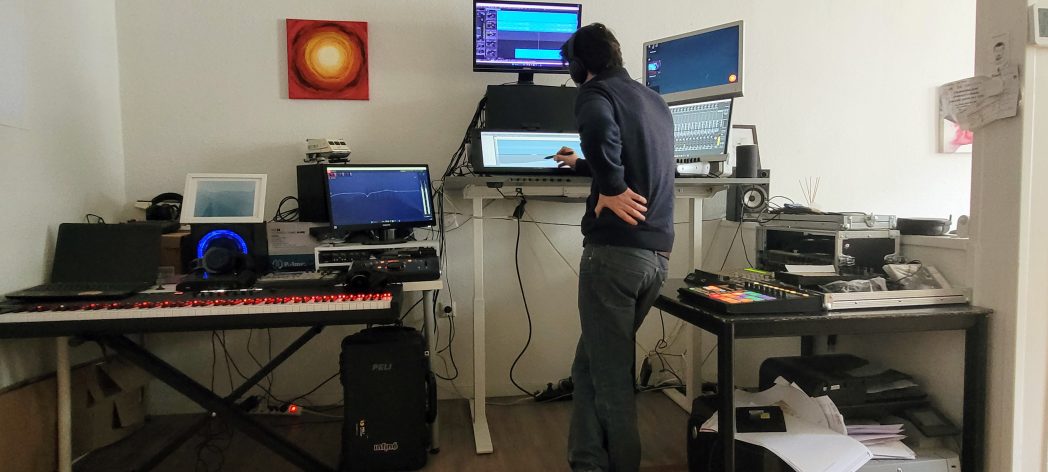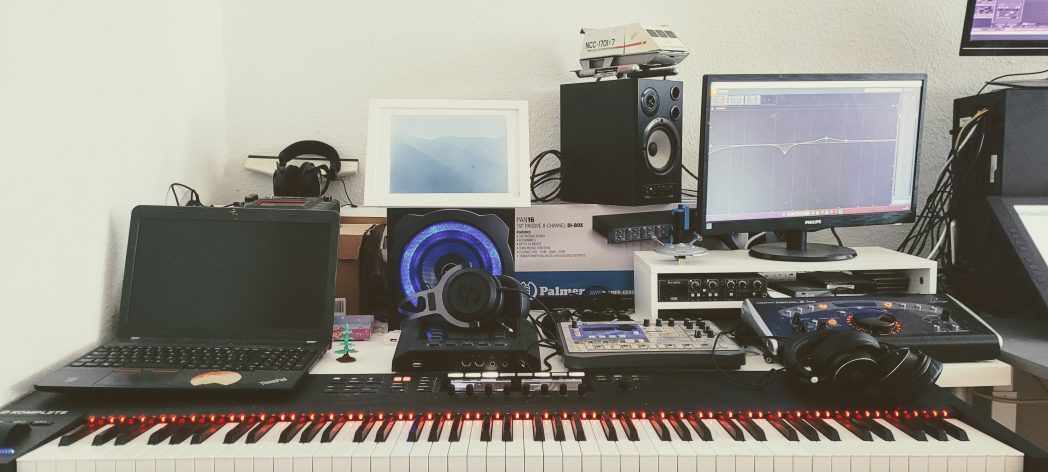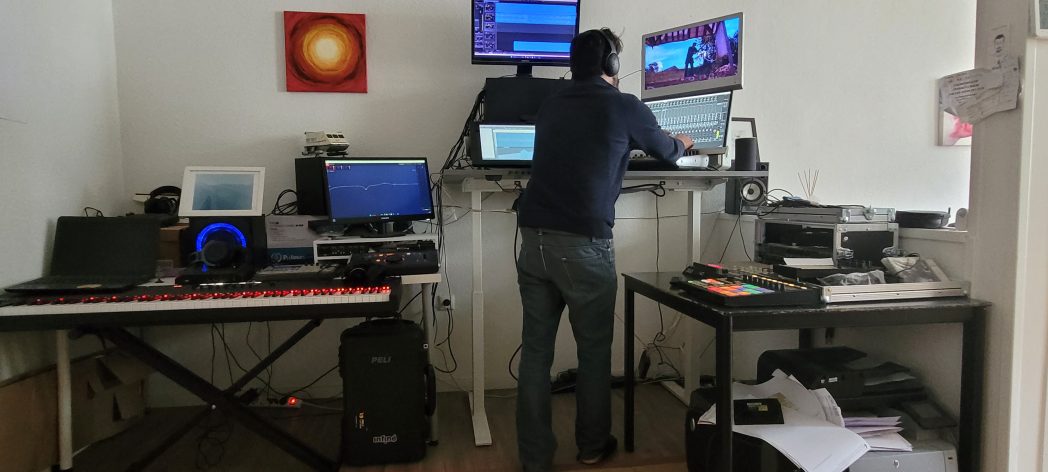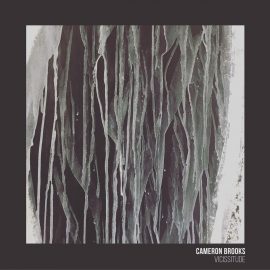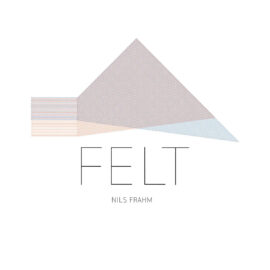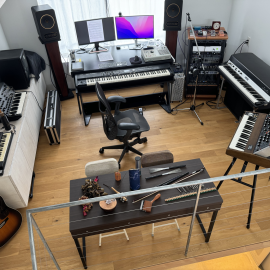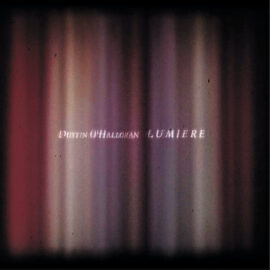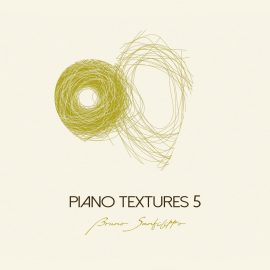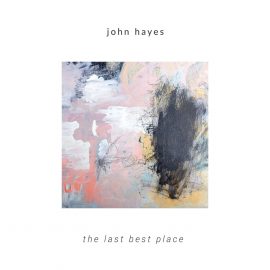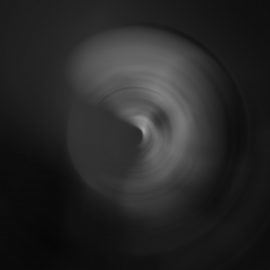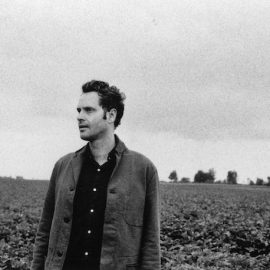Let’s start at the very beginning. Can you tell us how you got involved in composing, and what was your very first piece of gear?
When I was just six years old, I stumbled upon a hidden gem that would ultimately shape my entire musical journey. It was an old, battered piano that had been abandoned in a dusty barn, its once beautiful keys now chipped and yellowed with age. Despite its worn-out appearance, I felt a sense of curiosity and wonder, as if this relic of the past was calling out to me to give it new life. And so, with the fearless abandon of a child, I threw myself into learning how to play that old piano. It was a tough challenge, as the instrument was completely out of tune and produced the most dreadful noises imaginable. But I was undeterred. I spent hours every day tinkering with the keys, determined to create something beautiful from the chaos. Years went by, and my passion for music only grew stronger. By the time I was 14, I had saved up enough money from my allowance to buy myself two congas and a bongo. These exotic instruments added a new dimension to my sound, and I spent countless hours experimenting with different rhythms and beats. Looking back on those early days, I realize that discovering that old piano was a turning point in my life. It taught me the value of hard work and perseverance, and showed me that beauty could be found even in the most unexpected places.
How many different studio iterations have you gone through, and what does your final setup look like right now?
When I turned 18, my family gifted me a savings account to help jumpstart my adult life. I couldn’t resist the temptation to use the money to invest in my passion for music, and so, I spent every penny on studio equipment. Fast forward to today, and I’m still using the same gear that I bought all those years ago. Sure, I’ve added a few new technological advancements along the way, but the heart and soul of my setup remain unchanged. My instruments are like family to me, and I could never bring myself to sell them. Instead, I’ve entrusted them to the care of close friends and family, who use them to create their own musical magic. I’ve tried setting up my studio outside of my home, but it never felt quite right. It felt like I was clocking in for a job, not pursuing my passion. That’s why my studio is now back where it belongs, at home, where I can be free to create without any distractions or limitations.
Tell us about your favourite piece of hardware.
There are two very inconspicuous things that are also enormously important. Firstly, I have a server with over 20 terabytes of storage, which allows me to access my data from anywhere in the world, and is backed up three-fold with Backus. Additionally, I can operate my studio from any location as if I were at home. This is where my entire career, from the beginning to today, is stored. Secondly, an automatically height-adjustable work desk has become very important to me in recent years. Unfortunately, I have been suffering from a herniated disc for two years now, and it is important for me to be able to work standing up from time to time. When it comes to my studio, I like to keep things simple. It’s a place where I can create and experiment with different sounds and ideas. I have only the essentials, and my favorite piece of equipment is my trusty RME HDSPe sound card. It’s been my go-to for years, and it’s never let me down. Despite its age, it still performs like a champ, even when I have over 100 tracks running at once. It’s the most expensive piece of gear I own, but you wouldn’t even know it because it’s now hidden away in my already fourth computer build. But sometimes, I like to step outside of my studio and explore the world beyond. One of my favorite places to work is a church in Gnoien, 50 km away from my home. There, I have the pleasure of playing a massive pipe organ that puts any Moog synthesizer to shame. It’s a truly formidable instrument that can make your heart skip a beat with just a single note.
And what about the software that you use for production?
When it comes to my digital audio workstation (DAW), I swear by Samplitude Pro. It’s a reliable and easy-to-use program that I’ve had nothing but good experiences with. As a die-hard Windows user who’s not really a fan of Apple, and who struggles with Logic, Samplitude is my go-to DAW alongside Cubase. And when it comes to virtual instruments (VSTi), I’m all about the latest collection editions from Native Instruments. But my absolute favorite VSTi has to be Spectrasonics Omnisphere. It’s a powerhouse of a plugin that has helped me create some of my most memorable sounds and tracks.
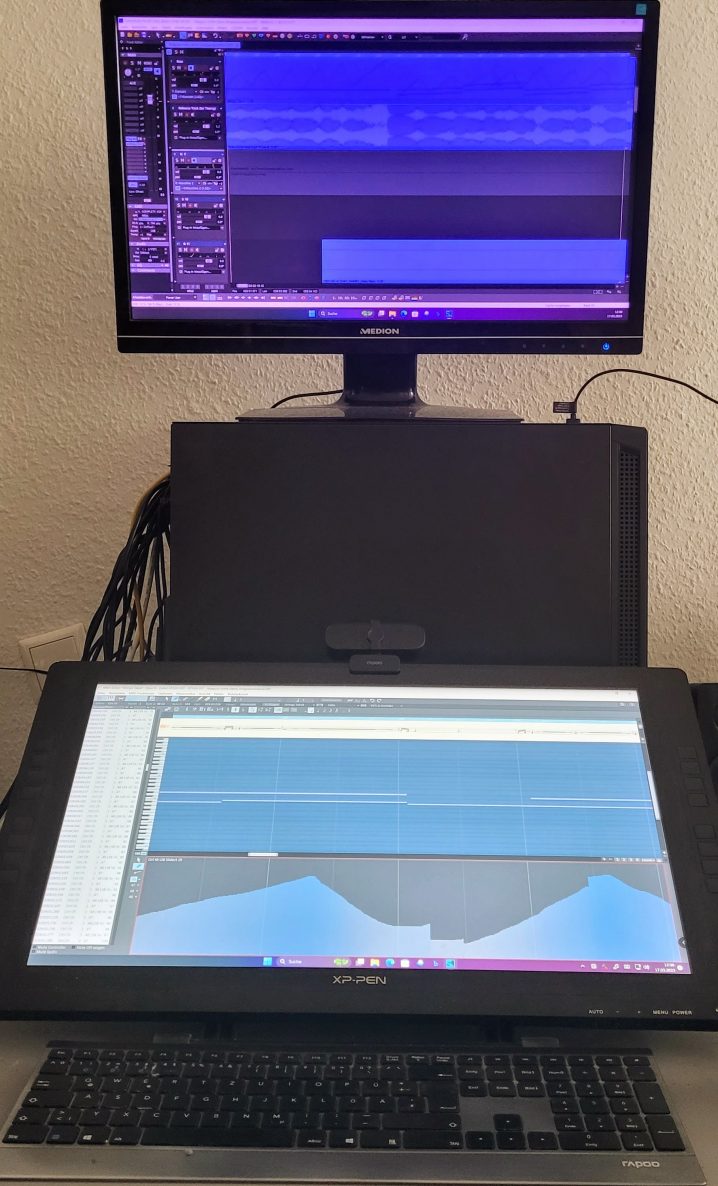
Is there a particular piece of gear that you’re just dying to get your hands on, and do you think one day you’ll have it?
Well, since I rely heavily on delivering soundtracks quickly, my focus is on computing power and software-based work. I’m annoyed by computer mice and have therefore switched to using touchscreens as much as possible, which has improved my workflow. Soon, I’ll be switching my entire setup to multitouch screens. I don’t like wasting time while I’m in charge of commissioned work to find the perfect sound in crazy wiring with analog synths. After all, my music must remain reproducible. However, when producing albums, I take much more time. I enjoy working with producers in their studios with fat analog gear to simply experiment.
Can you please share some aspects of sound design in your work?
Each track on the album Chronos has different approaches, ranging from Shepard tones and overtones of planetary magnetic fields to the breathing sounds that an organ makes when air flows through its pipes. These are just a few aspects of my sound design ideas.

Any particular new techniques that you tried out for your new album?
There’s a lot going on. My latest soundtrack has an exciting aspect in its sound design. While working on the Notre Dame documentary, I froze a bell strike and extended it for hours. During that process, I noticed overtones, hidden sub-tones, and even entire harmonies within that single bell strike. I isolated them and distilled them into a sound spectrum. From there, I built the first harmony, which consisted of each individual tone heard in the bell strike due to its extreme slowing down. I searched for every subsequent harmony and placed them one after the other. This led to the creation of the title ‘Adagio for Notre Dame’, where every tone heard was originally contained within that one bell strike. The extremely slowed-down bell strike also plays continuously in the background of the soundtrack as a broad, drone-like soundscape.
What does your live setup look like, and what do you bring with you when you travel for an extensive tour?
My live setup is currently composed of a variety of other musicians who mostly bring their own instruments, ranging from percussion and strings to brass. As for myself, I have a computer and several MIDI sync devices that allow me to control click-tracks for the musicians and bring in the electronic elements of my music live. My music is too complex to be performed alone, so having a talented group of musicians to collaborate with is essential. In-ear systems are a crucial part of our setup, providing monitoring for all the musicians on stage, while small clip-on microphones enable us to communicate with each other and with the FOH during the performance without the audience being aware. We are constantly communicating with each other on stage, making sure everything is in sync and flowing seamlessly.
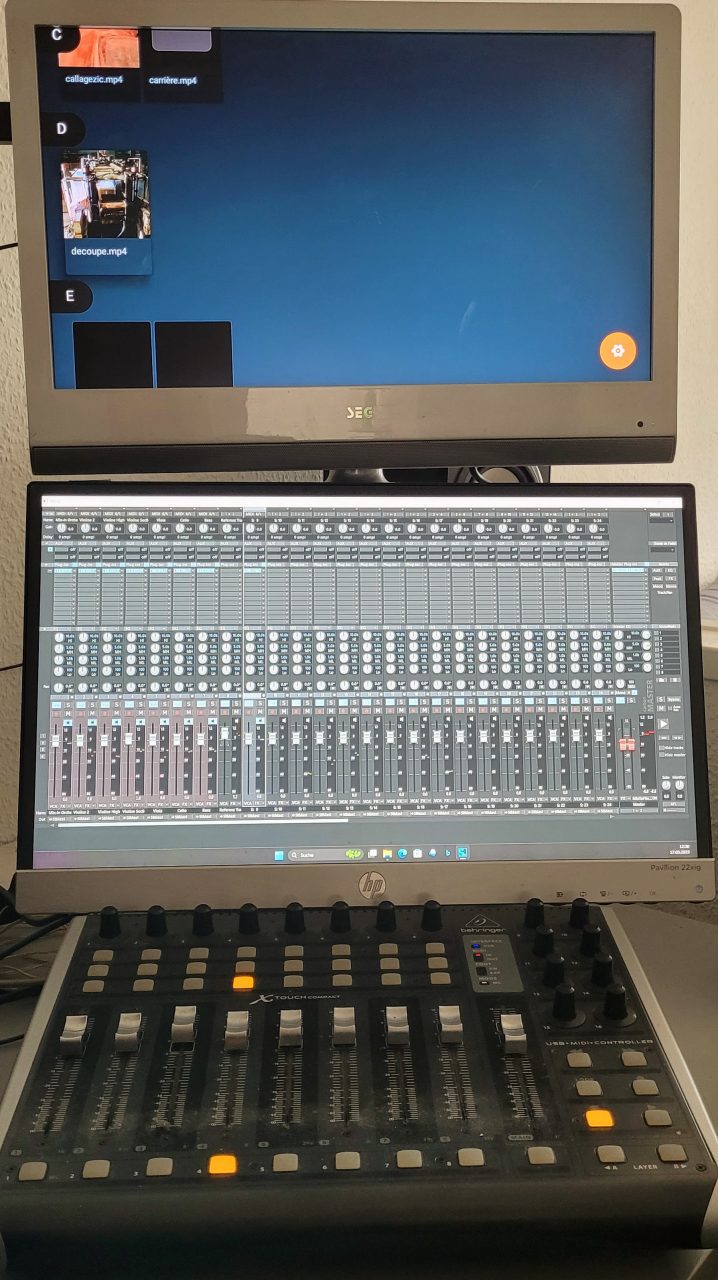
What is the most important environmental aspect of your current workspace, and what would be a particular element that you would improve on?
I’m someone who loves silence and being alone. I don’t necessarily enjoy being around other people all the time, and sometimes I risk becoming isolated even though it doesn’t bother me much. In my city, I often have to force myself to socialize so that my friends don’t take my absence personally. Ideally, I would love to have a studio somewhere in the mountains, where there’s nobody around, and I can just be. Of course, that’s a utopian idea, but if I had to improve my work environment, I would simply opt for more silence and less people.
What can you tell us about your overall process of composition? How are the ideas born, where do they mature, and when do they finally see the light?
My composition process is quite diverse. Sometimes I stumble upon a melody in nature by chance, whether it be birds singing or the wind whistling through trees. For example, the title “Satan’s Solution” was inspired by the sound of a ship bell in the wind. Music is everywhere; you just have to be willing to listen. Sometimes I dream of music, and other times I even hear it in my thoughts. And sometimes, it just happens when I’m bored and scribbling in the MIDI editor on my computer screen. Ideas can come from anywhere and everywhere.
After the piece is complete, how do you audition the results? What are your reactions to hearing your music in a different context, setting, or a sound system?
My main concern is that my music sounds good on large PA systems. I work with extremely delicate frequencies that few hi-fi systems can handle. Usually, I am disappointed by the loss of quality that occurs through streaming.
Do you ever procrastinate? If so, what do you usually find yourself doing during those times?
Procrastination is not just a guilty pleasure of mine – it’s a crucial part of my creative process. I don’t feel ashamed of it at all. It’s like a form of meditation for me. There are times when I can sit for hours, or even days, in my favorite chair, just staring at a painting hanging on the wall. Time seems to slip away without notice, and I become fully immersed in my own thoughts. It’s a chance for me to examine my innermost feelings, to explore my ideas about the world, and to just let my mind wander freely. And it feels like the most natural thing in the world to me.
What gets you inspired?
In the grand scheme of things, there are four enigmatic forces that captivate us all: life, death, the universe, and being. Each passing moment holds a hidden treasure that can stir our souls and spark our creativity. For me, the sheer wonder of it all is endlessly inspiring, but sometimes, the search for a topic can seem like a daunting task. That’s when I embrace the art of procrastination, letting my mind wander and explore until the perfect idea strikes.
And finally, what are your thoughts on the state of “electronic music” today?
The emergence and evolution of electronic music represent a profound achievement of human creativity and ingenuity. Its complexity and sophistication have surpassed that of many other forms of music, and its multifaceted nature, intricate synthesis, and intricate rhythms are a testament to the brilliance of its creators. Some may argue that electronic music is inferior to classical music because it relies heavily on technology and lacks the emotional depth of orchestral music. However, this notion is misguided and fails to recognize the vast potential of electronic music. Its complexity and sophistication are such that they rival the most intricate compositions of classical masters such as Bach and Beethoven. Electronic music is not merely a product of technology; it is an art form that requires immense skill, knowledge, and creativity to produce. The producers and musicians who create electronic music are true artists, and their work deserves to be celebrated and respected. Moreover, electronic music has the power to evoke a broad range of emotions and sensations. Its intricate synthesis and rhythm patterns can create immersive and mind-altering soundscapes that transport the listener to another dimension. It is a genre of music that is continually evolving, pushing boundaries and defying expectations.
